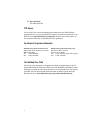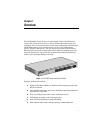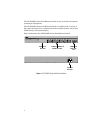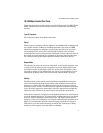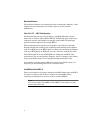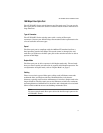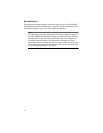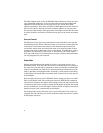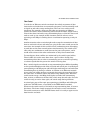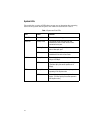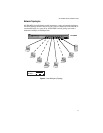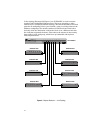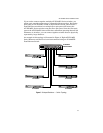AT-FS709FC Series Installation Guide
7
Introduction to Ethernet Switching
An Ethernet switch is designed to manage the flow of data between the
various devices that are connected to its ports.
MAC Address Table
The heart of an Ethernet switch is the Media Access Control (MAC) address
table. Every device that you attach to an Ethernet network has a MAC
address. This address is assigned to the device by the device’s manufacturer.
For example, every Network Interface Card (NIC) that you install into your
network computers has a MAC address that was assigned to it by the card’s
manufacturer.
A switch’s MAC address table is a list of the MAC addresses of the devices
that are connected to its ports. The switch uses this table to direct data frames
to their appropriate destination end nodes, and in some cases, to discard
frames that it receives. The switch creates the MAC address table by
examining the data frames that it receives on its ports. Each frame is
examined for its source address: that is, the MAC address of the end node that
sent the frame. The switch checks to determine whether the address is
already in its MAC address table. If it is not, the switch adds the address to
the table along with the port number on which the frame was received. The
result is a table that contains a list of all the MAC addresses of end nodes that
have sent frames through the switch and the ports on the switch to which the
end nodes are connected.
The switch also checks the destination MAC address of each frame it receives.
The destination address is the MAC address of the end node to which the
frame is intended. If the address is in the table, the switch directs the frame
directly to the port where the end node is located. This helps to ensure that
end nodes will only receive traffic that is intended for them and not have to
deal with traffic intended for other end nodes.
If the destination address is not in the MAC address table, the switch
broadcasts the frame to all switch ports. When the destination node responds,
the switch will be able to match the address to a port so that the next time a
frame is destined to that particular end node, the switch will be able to
forward the frame to the correct port instead of having to broadcast the frame
to all ports.
In some cases, a switch will even discard a frame. If the switch receives a
frame that is destined to a node on the same port on which the frame was
received, the switch discards it.




